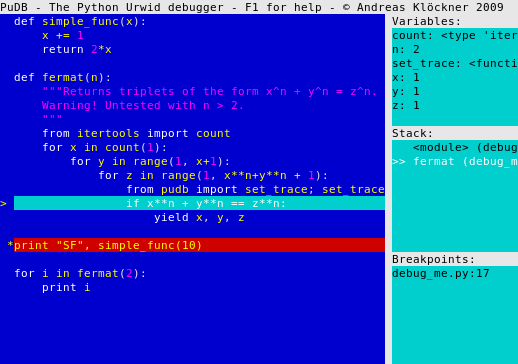CnD is a Python source-to-source translator that makes using n-dimensional arrays in C more pleasant. It will turn this code:
void sgemm(float *a, float *b, float *c, int n)
{
dimension "fortran" a[n, n];
dimension "fortran" b[n, n];
dimension c[n, n];
for (int i = 1; i < = n; ++i)
for (int j = 1; j < = n; ++j)
{
float tmp = 0;
for (int k = 1; k < = n; ++k)
tmp += a[i,k]*b[k,j];
c[i-1,j-1] = tmp;
}
}
into this:
void sgemm(float *a, float *b, float *c, int n)
{
for (int i = 1; i < = n; ++i)
for (int j = 1; j < = n; ++j)
{
float tmp = 0;
for (int k = 1; k < = n; ++k)
tmp += a[((k - 1) * ((n - 1) + 1)) + (i - 1)] * b[((j - 1) * ((n - 1) + 1)) + (k - 1)];
c[((i - 1) * n) + (j - 1)] = tmp;
}
}
You may also take a look at a more comprehensive example that shows a few extra bells and whistles.
The only effect of a dimension declaration is to modify the interpretation of the array(idx) subscript operator. dimension declarations obey regular C scoping rules.
I'd also like to note that CnD is a robust, parser-based translator, not a flaky text replacement tool. It understands all of C99, plus many GNU extensions.
Each axis specification in a dimension declaration has the following form:
start:end:stride:leading_dimension
start may be omitted. end and stride may also be omitted, but if entries after them are to be specified, their trailing colons must remain in place. For example, the axis specification :5 simply specifies a stride of 5. The stride simply acts as a multiplier on the index. No plausibility checking whatsoever is done on the dimension declaration. You may shoot yourself in the foot any way you like.
If the layout is given as "c" or not given at all, the following things are true:
- The array is laid out in row-major order.
- The end index is taken to be exclusive, if specified.
- The start index defaults to 0.
If the layout is given as "fortran", the following things are true:
- The array is laid out in column-major order.
- The end index is taken to be inclusive, if specified.
- The start index defaults to 1.
(Most) of the knowledge contained in the dimension declaration may be reobtained programmatically by the follwing functions:
- rankof(a)
- nitemsof(a)
- lboundof(a, axis)
- uboundof(a, axis) (returns the user-specified upper bound)
- puboundof(a, axis) (returns the index just past the end of axis)
- ldimof(a, axis)
- strideof(a, axis)
In each case, axis must be a constant integer (not a constant expression, a plain integer).
Installation / Usage
You may obtain CnD by downloading the tarball from the package index, or from github:
git clone git://github.com/inducer/cnd.git
cd cnd
git submodule init
git submodule update
To use CnD, simply add distribution-dir/bin to your PATH.
To get started, simply run (from within the cnd root):
cd examples
../bin/cndcc gcc -std=c99 basic.c
./a.out
If you would like more fine-grained control over the translation process, the cnd command exposes just the source-to-source translation. Note that cnd expects preprocessed source. You may pass the option -E to have cnd run the preprocessor on your source for you. Run:
cnd -h
to get full help on the command line interface. You may set the CND_CPP environment variable to the preprocessor you wish to use.
What is new in this release:
- Syntax change from a[i;j] to a[i,j].
- Still more parser support for real-life headers.
Requirements:
- Python


Comments not found